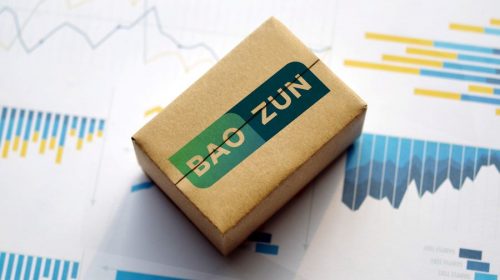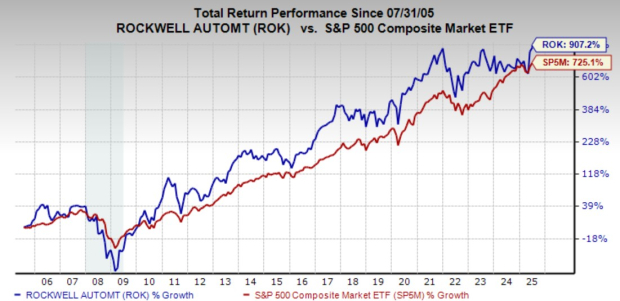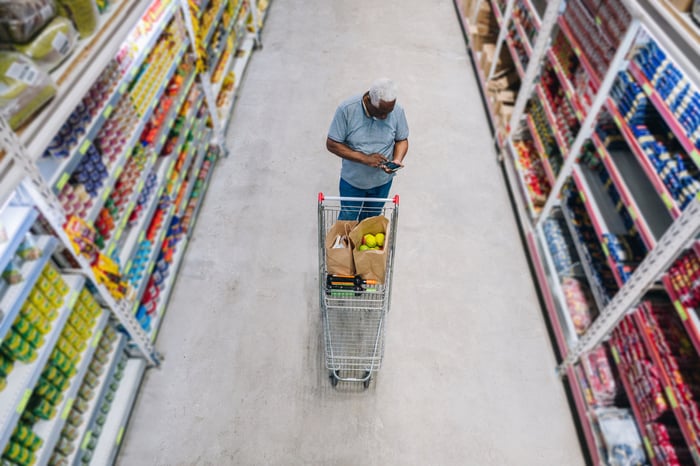
Baozun’s revenue grows 7.7% amidst a new Gap store expansion in China
Highlights of Baozun’s Fourth Quarter Results
- Baozun achieved its first net profit in over three years during the fourth quarter, driven by its e-commerce services and brand management sectors.
- The company ended last year with 152 Gap stores in China and plans to add another 40 stores in 2025.
The recent quarterly report from Baozun Inc. (BZUN.US; 9991.HK) provided insights into its business performance. The company recorded a respectable revenue increase and saw same-store sales growth in its Gap clothing stores, a noteworthy accomplishment considering current consumer sentiment challenges. Additionally, it posted its first quarterly profit since 2021, indicating promising developments for 2025.
Nonetheless, the market reacted differently. The stock dropped by 12.7% following the earnings announcement, overshadowing an otherwise solid report. Despite this decline, the stock has risen 15% over the past six months, suggesting a growing confidence among investors in Baozun.
Analyst opinions reflect this confidence; five out of seven analysts surveyed by Yahoo Finance rated Baozun a “buy,” while the remaining two opted for “hold.” Still, investor sentiment differs, as Baozun’s price-to-sales (P/S) ratio stands at just 0.17. In contrast, The Gap Inc. (GAP.US) has a P/S ratio of 0.52, and competitor Giordano (0709.HK) is at 0.63. The gap widens further when comparing Baozun to other e-commerce service providers. For example, domestic rival Weimob (2013.HK) has a P/S ratio of 3.12, while U.S. leader Salesforce (CMS.US) trades at 7.18.
To comprehend why investors are cautious about Baozun, it’s important to look at the company’s history. Originally, it provided software services to e-commerce businesses, closely linked to Alibaba’s (BABA.US; 9988.HK) ecosystem, which remains a significant shareholder. However, this model has faced stagnation over recent years.
In 2023, Baozun made headlines by acquiring Gap’s operations in China and stepping into brand management. Shortly thereafter, it formed a joint venture with Authentic Brands Group to expand the U.S. brand’s Hunter label into Asia.
While the shift towards brand management raised questions due to its divergence from Baozun’s core service model, the initial struggles appeared to pay off as the brand management segment grew to represent about 20% of the company’s revenue.
Last quarter, Baozun’s total revenue climbed 7.7% year-over-year to 3 billion yuan ($414 million), compared to 2.78 billion yuan previously. This marks the second consecutive annual revenue growth after contractions in both 2021 and 2022. Fulfillment costs remained stable, whereas sales and marketing expenses rose by 17%.
This balance resulted in a modest profit of 100,000 yuan for the quarter, signaling the company’s return to profitability after more than three years of losses. Chairman Vincent Qiu expressed optimism, forecasting 2025 as a pivotal year for growth, with analysts anticipating an annual profit – a first since 2020.
“The year 2025 marks a combination of our strategic transformation and sets the stage for future growth,” Qiu noted in the earnings call. “We have strengthened our senior management team to drive this next phase.”
Gap Expansion Plans
A closer examination of Baozun’s key operations indicates its brand management segment is gaining momentum after a challenging start. While Gap stores dominate this division, Baozun recently launched its first Hunter outlets in Shanghai and Malaysia.
Sales from its brand management segment surged by 17.3% year-over-year in the fourth quarter, rising to 535 million yuan from 456 million yuan the previous year.
In the second half of last year, Baozun opened 40 new Gap locations, including 16 in the fourth quarter, bringing the total to 152 by the end of 2024. This year, the company plans to open an additional 50 Gap stores, resulting in a net addition of 40 stores after accounting for closures.
Notably, the Gap stores reported “low single-digit same-store sales growth” during the fourth quarter, a promising sign in a weak retail climate. Additionally, the company is collaborating with franchisees to expand into second-tier cities, a strategy many brands are adopting for growth in China’s smaller urban areas.
“While we opened new stores throughout the year, we also strategically closed underperforming locations to optimize our offline network, making 2024 a year of structural upgrades,” stated Ken Huang, CFO of Baozun Brand Management, during the earnings call. “Looking ahead, we plan to accelerate our expansion by prioritizing high-traffic locations that maximize sales potential.”
Huang mentioned that following the Hunter store’s opening in Shanghai, there are plans to extend that brand into other Chinese markets, including Beijing, Shenzhen, and Hangzhou.
On the e-commerce front, services revenue grew by 9.3% year-over-year, climbing to 1.89 billion yuan from 1.73 billion a year earlier. This growth was mainly driven by increased online operations and marketing services. However, it faced some challenges, with e-commerce product sales declining 4.3% to 572 million yuan from 598 million yuan last year, reflecting subdued consumer sentiment.
The strong performance from the brand management sector, combined with solid results from e-commerce services, allowed Baozun’s operating income to rise to 73.2 million yuan from just 6.4 million yuan a year earlier. This improvement underscores the company’s return to profitability after a prolonged period of losses.
Despite these advancements, the recent stock selloff raises questions. A slight drop in the gross margin for Baozun’s brand management unit—from 52.9% to 50.4%—due to discount promotions is a concern. Yet, this minor decline does not fully explain the significant drop in stock prices. Should 2025 unfold as the company anticipates, there could be notable upside potential for Baozun’s shares.
© 2025 Benzinga.com. Benzinga does not provide investment advice. All rights reserved.








